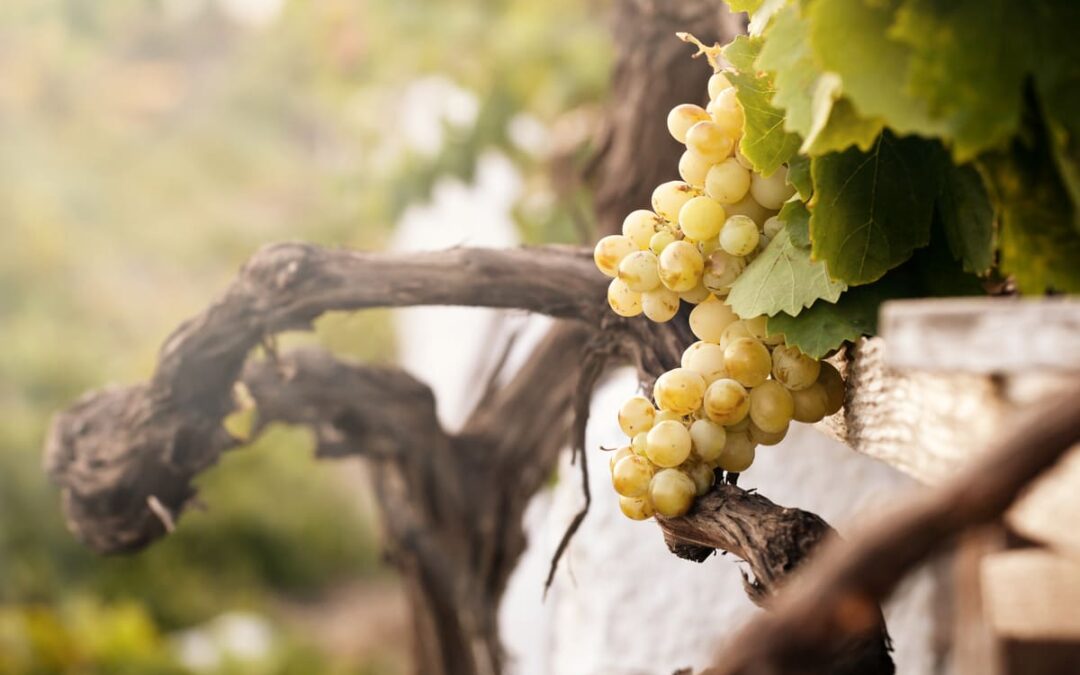Managing Napa vineyards is a year-round job. Since each year presents variances in temperature, precipitation, wind, or other conditions, and vineyard managers respond to changes differently, every vintage is unique. For the same reasons, the volume will also be affected by varying conditions.
Early in the summer, vineyard managers from Hill Family Estate, one of the premier Napa wineries, begin to make crop projections in the vineyards to quantify the potential output at harvest time.
Initial Projections
By June, bud break and flowering are over, the petals begin to fall, and the fruit set stage starts to yield tiny berries in tight clusters. By counting each cluster on a few dozen vines in a defined area or “block,” managers begin to extrapolate the potential output or “vigor” of a broader area of the vineyard.
Note that these stages occur slightly later at higher elevations, so development throughout Napa Valley is never uniform.
Ongoing Estimates
As the summer progresses, Napa vineyards require careful canopy management and thinning to ensure the final grape crop will be ideal for converting to wines. Growers in Napa vineyards tend to eliminate more than in other areas to provide the highest quality crop. This “green harvesting” reduces the overall crop yield but makes the final output better and more uniform.
Finally, by mid- to late summer, the carefully managed grapes reach their pigment development stage or “veraison.” Over several weeks, the grapes begin to develop their mature coloring, which depends on the variety and the microclimate or temperature variances where the vines are growing.
During the latter stages of veraison, the grapes have almost achieved their fully ripened mass. Thus, by taking samples of whole clusters from vines in a selected block, vineyard managers can again calculate their potential overall yield.
Estimating Different Varieties
The projected yields per acre of each grape variety will differ somewhat because the clusters of some are more massive than others. For example, Pinot Noir and Sauvignon Blanc vines produce small, tight clusters. Zinfandel and Malbec vines tend to create large clusters, some weighing as much as one pound.
Cabernet Sauvignon clusters can vary significantly, depending on the site and its rootstock or derivation. The location is significant because vineyards that are at higher elevations usually produce smaller clusters than those growing on the Valley floor.
Interestingly, some vineyard managers have been able to calculate their annual yields somewhat accurately by measuring the output of one or a few vines that demonstrate an accurate representation of the overall vineyard. These are called “indicator vines.”
Hill Family Estate Vineyard Management
One of the premier Napa Valley wineries, Hill Family Estate, harvests grapes from their vineyards scattered throughout Napa Valley. Over the years, several different soil types and microclimates have been identified as ideal for specific varieties of grape development.
For four decades, Hill Family patriarch, Doug Hill, has been developing and overseeing top vineyards that produce the highest quality crop for many of the top Napa Valley wineries.
The Hill Family Estate winery utilizes the best quality grapes for Cabernet Sauvignon, Merlot, and Syrah from their Oak Knoll vineyards. The winery also chooses production from near Atlas Peak (at 1,500 ft. elevation) for Merlot, Malbec, Sauvignon Blanc, Syrah, and Cabernet Sauvignon.
From the Carneros appellation of Napa Valley, Hill Family Estate selects the best grapes for Pinot Noir, Merlot, Cabernet Franc, Albariño, Chardonnay, and Sauvignon Blanc.
Visit Hill Family Estate Winery
To sample some delicious and memorable wines from one of the best Napa Valley wineries, visit Hill Family Estate in Yountville. There you can learn all about the growing and harvesting of grapes and the many factors that affect the final wine characteristics.
Plan your trip soon to Yountville for a terrific Hill Family Estate wine tasting experience.

